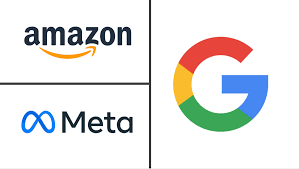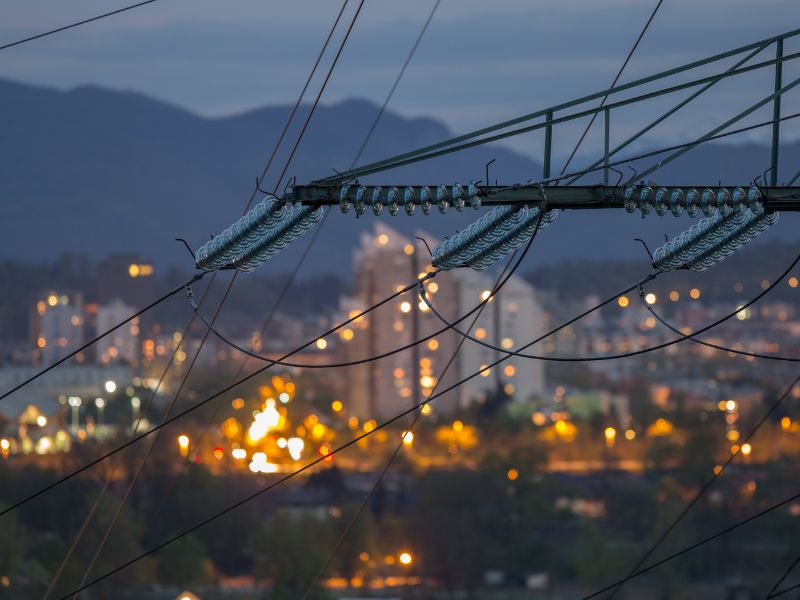
How grid enhancing technologies can help data centers reach 100% clean energy targets
November 28, 2023
Data centers are essential for safely storing and processing large volumes of data that exist in today’s world. Their importance has only grown as new technologies such as generative AI become increasingly prominent in day-to-day activities. The tech companies behind these data centers are striving to move to 100% of electricity consumption from carbon free energy, but grid congestion and project delays are slowing progress. In this article, Ted Bloch-Rubin explains why some tech giants are looking at alternative transmission technologies to help accelerate the interconnection of renewables to allow them to reach their clean energy goals.


- 24/7 carbon free energy (CFE) by 2030 – Google.
- Net zero emissions across our value chain in 2030 – Meta.
- Powering our operations with 100% renewable energy by 2025 – Amazon.
Global tech companies have set ambitious targets for clean energy use by their data centers, offices, and other energy loads. Reaching these targets will require getting higher levels of clean energy connected to the grid in a timely and cost-effective manner. But this has proved to be very difficult, and the challenge is increasing as the electricity consumption of tech companies continues to grow to keep pace with the digitalization of our world, and more recently by the rapid rise in generative AI.
Let’s take Google as an example. In 2022, 64% of Google’s total electricity consumption was from carbon free energy sources. But in that same year, the company’s load from data centers grew by a remarkable 18%. As a result, procuring significantly more clean energy was necessary just to maintain Google’s 2022 numbers.
Given the ambitious targets, they’ve set for clean energy procurement, tech companies are increasingly concerned about grid capacity—or lack thereof—and are starting to look to grid technologies that can be quickly delivered to increase capacity on the existing grid. Several reasons explain this shift in thinking:
- Spare capacity on the existing grid at a time when congestion is rising, but new transmission assets are more than a decade away
- Policy shifts mandating more efficient grids, combined with significant funding opportunities
- New abilities to harness the power of a strong collective voice
Spare capacity on the existing grid at a time when congestion is rising
Power naturally flows on the path of least resistance. However, this can overload on certain transmission corridors, even when spare capacity exists on parallel circuits or other parts of the network. In the US, as in most countries, there is abundant spare capacity on the grid, but it’s simply unavailable to deliver power, thanks to bottlenecks caused by overloads on certain lines. This problem has become more challenging in recent years. Carbon free generation is being built or expanded in locations quite different from the fossil fuel or other traditional generation that it is replacing, completely changing the patterns of power flow on the network. The typical 7-10 year timeline to complete large transmission projects has exacerbated the problem.
Grid enhancing technologies, such as modular power flow control, can help utilities to balance power flows across circuits by changing the reactance of transmission lines, allowing utility operators to push power off overloaded lines or pull power onto underutilized lines. By quickly releasing capacity, these solutions enable new renewable energy sources to connect faster and allow existing power generation to be expanded. Ultimately, these new technologies provide more opportunities for procuring clean energy in an extremely competitive market.

Positive policy shifts mandating more efficient grids and significant funding opportunities
Recent policy and regulatory changes have started to reform interconnection processes, providing utilities greater certainty on timing as they make decisions on projects and the study process. For instance, the newly introduced FERC Order 2023 mandates certain utilities to consider advanced power flow control and other alternative transmission technologies during interconnection studies. This should lead to faster and more cost-effective grid upgrades, enabling new generation to deliver lower costs for developers and consumers.
New measures like this are supported by multiple funding programs, which further encourage timely and cost-effective interconnection of new renewable generation. In fact, advanced power flow control technology, SmartValve™, will be used in two large-scale projects awarded in the first round of projects under the DOE’s GRIP (Grid Resilience and Innovation Partnership) program.
These shifts in policy reduce costs for renewable energy developers and utilities by providing both the carrot and stick to use existing infrastructure more efficiently. Ultimately, this should allow renewables to connect faster, providing greater opportunities for tech companies and other large energy consumers to procure clean energy and stay on track to achieve their yearly targets.
Increased emphasis on the power of a strong collective voice
As major consumers and producers of electricity, tech companies and renewable energy developers are increasingly realizing their role in grid planning decisions. This is even more important today, when both consumers and producers are asked to provide ancillary services and other flexibility services to the grid operator.
These parties, along with grid technology providers, often collaborate through coalitions, partnerships, or initiatives like the aforementioned GRIP proposals, lobbying for policy changes, facilitating Power Purchase Agreements (PPAs), and more. Each party brings a different base of expertise, resources and interests to the table, ideally leading to optimal solutions for multiple stakeholders, including who are rightly at the center of all grid decisions.
Clearly, more renewable generation needs to come online quickly to keep the US on track to achieve 100% carbon free electricity by 2035, thereby enabling tech companies to achieve their own yearly goals. However, grid congestion and lengthy timelines for new transmission pose significant challenges to this effort. This has led tech companies to explore alternative transmission technologies to increase grid capacity and enable faster connections of renewable energy. The increasing use of these technologies by utilities over the past few years, combined with positive policy shifts and significant funding opportunities, offers a favorable environment for the even wider-scale adoption of grid enhancing technologies. Moreover, the collective voice of tech companies, renewable energy developers, and grid technology providers strengthens their influence in advocating for grid upgrades and policy changes.
Much is at stake in the successful transition to a carbon free future. Working together is our best chance to achieve net zero as soon as possible, while maintaining a resilient, reliable, and efficient grid.
Contributing expert
Ted Bloch-Rubin is Director of Business Development for the Americas at Smart Wires, engaging with stakeholders across North America to increase awareness of grid enhancing technologies and how utilities can use them to get more from their existing grids. Ted was Chair of the WATT Coalition for 2021/2022 and remains active in the association’s policy and advocacy work. Prior to joining Smart Wires, Ted worked with in the high-tech transportation industry.
For press related purposes, please contact us at marketing@smartwires.com.
Dive deeper into related content
Explore our products and services
Talk to our experts



